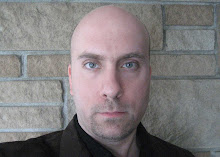Thursday, December 29, 2011
Whistling and Paying Attention
Pucker your lips and whistle. Then pucker your lips and merely blow. Now try to explain how you made the difference.
Despite the fact that whistling is a simple observable activity, trying to verbally explain the difference (between whistling and merely puckering your lips to blow) isn't easy.
Explaining what I mean by "paying attention" is even harder than explaining the distinction between whistling and silently blowing air. Trying to objectively distinguish between someone who is paying attention and someone who is simply witnessing appearances (or concentrating or daydreaming) is almost comparable to a deaf man trying to distinguish between someone who is whistling and someone who is merely puckering their lips and blowing air.
"You do know how to whistle, don’t you?"
In order to explain what I mean by "paying attention" I formulated a whole vocabulary of terms. I define my terms with more than ordinary precision for extraordinary clarity because the subject requires extraordinary clarity. I use pictures and symbols to supplement the vocabulary, composing a comprehensive conceptual model of what attention is and how it works. A carefully formulated model, based on rigorous self-observation and practice, is essential to provide an explanatory context for what attention means. Without a careful modeling of the subject based on the most sagacious observations possible, the potential to pay attention will likely remain unrecognized and we will merely be blowing hot air.
Attention means intentionally getting a feel for being present. When you learn how to actually pay attention, then the act of attention becomes intuitively familiar, almost like riding a bicycle. However, unlike riding a bicycle, the act of attention isn’t something you can do "unconsciously" or habitually. Attention is a conscious activity, which precludes it becoming habitual or mechanical in the way that riding a bicycle can become habitual or mechanical.
Attention is similar in some ways to juggling. Attention involves the redistribution and circulation of subtle internal energy. Similar to the act of juggling, the act of attention is a kind of "muscular" exercise requiring dexterity, a continuous awareness of one’s position in space as well as precise timing. The juggling analogy is depicted in the Tarot Trump entitled "The Magician."
Attention, like juggling, is a movement that doesn’t "go somewhere." Attention remains present. Attention increases the amount of energy that circulates within one’s being, and that circulation is what in fact constitutes one’s being, an energetic body.
You must apply your whole being to pay attention, to be fully present. Attention involves the sum of who you are. Attention isn’t something you do with only a portion of your being. Attention isn’t a program that runs on part of your being while other parts of your being do something else. Attention isn’t subconscious or reflexive. Attention is intentional, a conscious action, the exercise of being.
Paying attention can feel very uncomfortable, which is one reason why our ability to pay attention is generally overlooked and undeveloped.
Why pay attention? The exercise of attention increases and extends our sense of being present and thereby grows our being. Attention increases our conscience, our means of feeling. The culmination of the exercise of attention is the full maturity of being, an energetic body that is self-organized and self-sustaining, a fully conscious individual.
Michael
Subscribe to:
Post Comments (Atom)

No comments:
Post a Comment